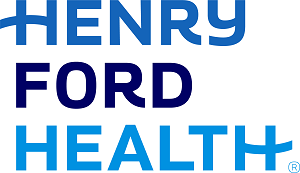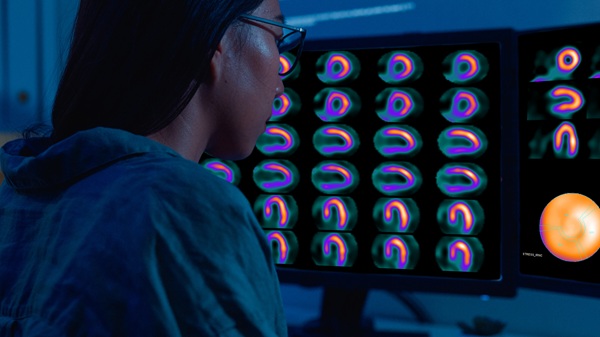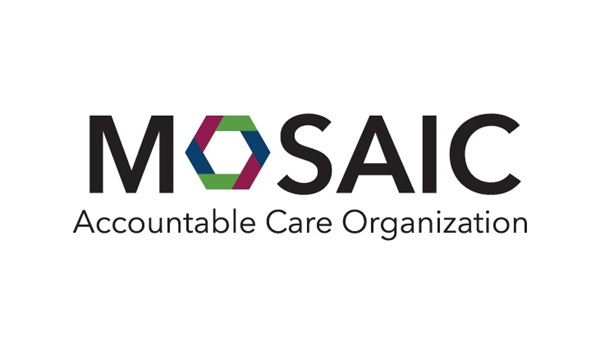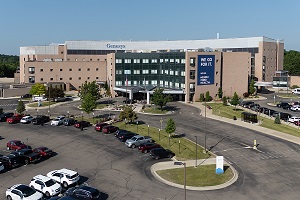Tiny Heart Pump, World's First, Saves Henry Ford Patient's Life

FOR IMMEDIATE RELEASE
DETROIT – Cardiologists in Detroit for the first time in the world used a novel route to the heart to insert a tiny heart pump to keep a woman alive at Henry Ford Hospital in Detroit.O'neill impella with patient smaller.jpg
Tarita Harrison, 45, of Detroit, had been suffering from a severe viral illness when she came to the emergency room by ambulance, nearly unconscious on Dec. 2. As she neared death and her heart began to fail, William W. O’Neill, medical director of the Henry Ford Center for Structural Heart Disease, and Adam Greenbaum, M.D., the center’s co-director, used the Transcaval Approach to insert the straw-sized Impella pump into her heart.
The tiny pump supported her weakened heart muscles for six days as Tarita’s heart function improved. They removed the pump through a catheter Dec. 8.
“I’m glad they said, ‘This is going to be your temporary heart,’” Tarita said, sitting in her hospital bed Dec. 16 as she stirred a cup of red gelatin. “I’m glad to be alive.”
Tarita’s blood vessels were too small to access her heart using traditional routes. Using the transcaval approach, Henry Ford specialists guided the tiny, straw-like heart pump through a catheter into Tarita’s leg vein, crossing over mid-body into the aorta, and moving up into the heart. The approach is used when vessels typically used are either too small or inadequate due to blockage or scar tissue for conventional approaches.
The transcaval approach was pioneered at Henry Ford Hospital in 2013. After guiding the catheter up through a leg vein, Henry Ford specialists place a bridge-like tube between the vein and aorta in the patient’s abdomen. Then they can use the bridge to guide tiny valves, pumps or other treatment devices up into the heart. The bridge is then sealed off when they’re done.
“This technique is a breakthrough that will allow temporary heart support to be more widely used and allow quicker recovery of heart function for many patients like Mrs. Harrison,” said Dr. O’Neill. “The advanced treatments we continue to develop at Henry Ford save many lives and improve the quality of life for others.”
The transcaval technique was first performed by O’Neill; Adam Greenbaum, co-director of Henry Ford Hospital’s Center for Structural Heart Disease; Gaetano Paone, M.D., Division Head of Cardiac Surgery at Henry Ford Hospital. They worked closely with Robert Lederman, an interventional cardiologist at the National Heart, Lung, and Blood Institute who developed the procedure in a research setting.
The technique is now being taught all over the world as an alternative access to the heart for patients whose veins are too small or have other medical conditions that prevent traditional access routes to the heart. The Impella heart pump is used for temporary support of heart function while patients’ health improves or until doctors are able to repair other, structural issues.
Henry Ford cardiologist Celeste Williams, M.D., Medical Director for the hospital system’s Mechanical Circulatory Support Device Program and Heart Transplantation Program, will continue to oversee Tarita’s recovery.
For more information or an appointment, call the Henry Ford Center for Structural Heart Disease at (313) 916-1878.
Media Contact:
Tammy Battaglia
Media Relations, Senior Specialist
Henry Ford Health System
(248) 881-0809
Tammy.Battaglia@hfhs.org
.svg?iar=0&hash=F6049510E33E4E6D8196C26CCC0A64A4)

/hfh-logo-main--white.svg?iar=0&hash=ED491CBFADFB7670FAE94559C98D7798)







